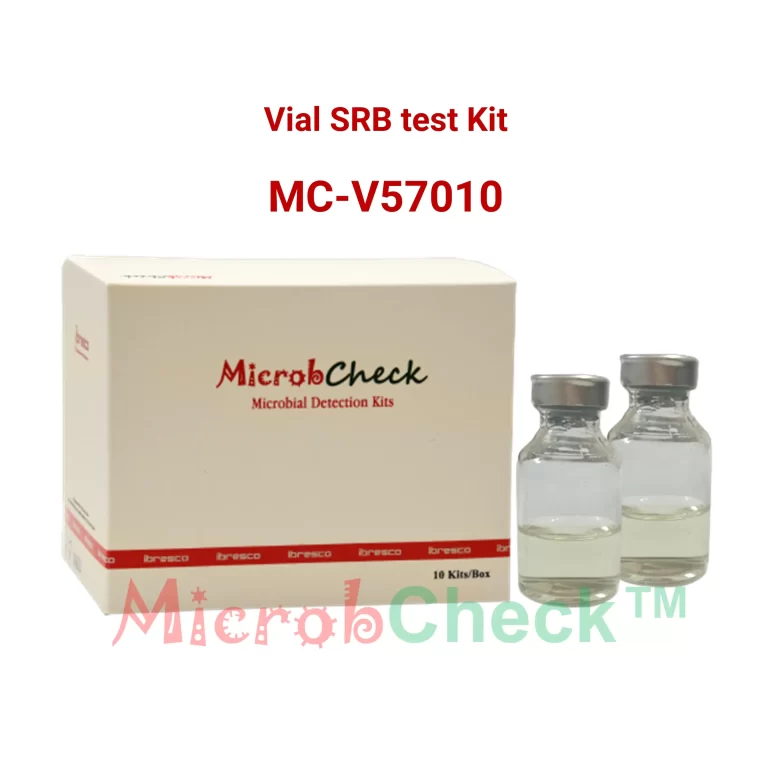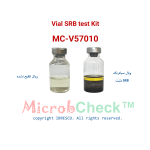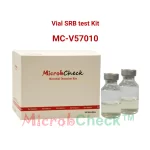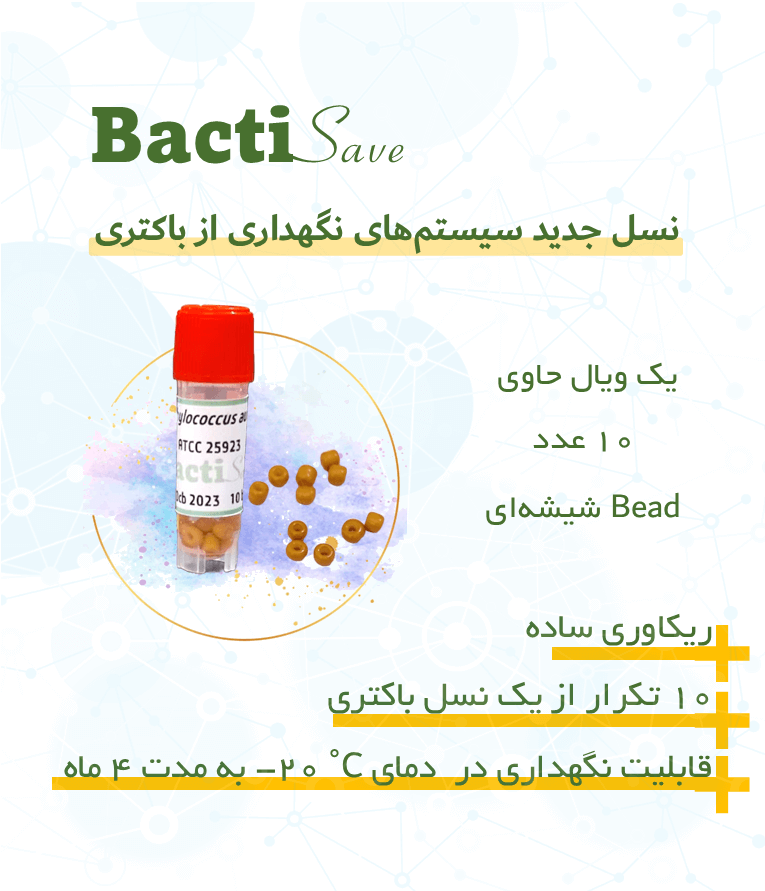Anaerobic sulfate-reducing bacteria can be found in all environments. These bacteria are found in the process of oil recycling, deep wells, chillers, metal plating fluids, water-based hydraulic fluids, petrochemical industries, and places where oil and water mix together. These microorganisms cause the production of harmful hydrogen sulfide, metal corrosion, and concrete cavities during growth. Therefore, tracking these microorganisms can prevent many of the damages caused by them. The MicrobCheck SRBTM test kit process is based on growth in Broth culture media, in which a large number of SRBs grow faster than the APIRP-38 method.
Test
Preparation
- Please read the complete procedure before sampling.
- Begin the test immediately after sampling.
- Do not transfer the sample with non-sterile instruments or hands.
Sample Collection:
- For oil samples: Microorganisms do not grow in the absence of water. In water and oil-containing systems, organisms are found in the interfacial and aqueous phases. Therefore, it is very important to take samples from these parts. The sampling vials should contain fresh samples collected from these phases and a thin layer of mineral oil on the surface of the samples. For oil or grease, you can collect the excess from the sample using a dropper.
- Water and other samples: no specific method for sampling them is recommended.
Method of use
Testing for the presence/absence of SRB bacteria:
If the aim of the test is to examine the presence or absence of SRB bacteria in the sample under examination, the method of using the kit is as follows:
- After sterilizing the metal cap on the glass vial with alcohol, remove it and sterilize the underside again with alcohol.
- Remove the syringe from the cover without touching the syringe head and connect it to the sterile needle in the cover and tighten it. The syringe tip should not come into contact with anything other than the sample and sterile materials.
- Remove the syringe needle from its cover and draw 1 milliliter of the desired sample.
- Insert the syringe needle into plastic cover number 1, which has been previously cleaned with alcohol, and transfer the sample gently into a glass.
- For better results, add a few drops of oil (approximately 1 milliliter) to the sample with a sterile syringe to cover the surface of the sample.
- Store the samples in a sealed box at room temperature or in an incubator at 25-30 degrees Celsius.
If, in addition to checking for the presence of SRB bacteria, an estimate of the approximate number of these bacteria is needed, perform the test by using the following method of serial dilution:
1- Mark the culture bottles with numbers 1 to 5.
2- After sterilizing the metal cap with alcohol, remove it and sterilize the underside with alcohol again.
3- Take the syringe out of its cover without touching the syringe tip, attach it to the sterile needle in the cover, and secure it. The syringe tip should not come into contact with anything other than the sample, which must be sterile.
4- Remove the needle cover and draw 1 mL of the desired sample into the syringe.
5- Insert the needle into the plastic cover of bottle 1, which has been previously cleaned with alcohol, and transfer the sample slowly into the bottle.
6- Without removing the syringe from the cover, draw 1 mL of the solution in the bottle.
7- Remove the syringe from the cover and transfer the contents into bottle number 2. Mix the sample as in step 6.
8- Using the syringe, transfer 1 ml of the sample to glassware number 3.
9- Using the syringe, transfer 1 ml of the sample to glassware number 4. Mix the sample as in step 6.
10- Using the syringe, transfer 1 ml of the sample to glassware number 5. Mix the sample as in step 6. Then discard 1 ml of the sample.
11- For better results, add a few drops of oil (approximately 1 ml) to the sample with a sterile syringe to cover the surface of the sample.
12- Keep all samples in a tightly closed box at room temperature or in an incubator at 25-30 degrees Celsius. Then perform step 2.
شما نیز میتوانید سوالات خود را ثبت کنید!
اگر سوالی در مورد محصول دارید از این قسمت بپرسید!
results interpretation
After 2, 5, and 15 days of incubation, compare the test tubes with each other and record positive results. Interpret the results according to the provided table. Add the obtained results to the given table and record any changes. MicrobCheck SRB test kit isolates Sulfate-Reducing Bacteria. If SRB bacteria are present, the color of the solution in the black tubes will change. The presence of black or gray spots or lines is not an indication of the presence of SRB, and the color should be completely black.
Calculating the number of bacteria in the sample
In this test, serial dilutions have been prepared from the samples, so based on their turbidity, the number of bacteria present can be estimated according to the chart in this brochure.
| Range of Viable Bacteria per ml of sample or slurry | Highest Bottle to turn positive |
|---|---|
|
1 to 10
|
1
|
|
10 to 100
|
2
|
|
1000 to 10000
|
3
|
|
100000 to 1 million
|
4
|
|
more than 1 million
|
5
|
Anaerobic sulfate-reducing bacteria can be found in all environments. These bacteria are found in the process of oil recycling, deep wells, chillers, metal plating fluids, water-based hydraulic fluids, petrochemical industries, and places where oil and water mix together. These microorganisms cause the production of harmful hydrogen sulfide, metal corrosion, and concrete cavities during growth. Therefore, tracking these microorganisms can prevent many of the damages caused by them. The MicrobCheck SRBTM test kit process is based on growth in Broth culture media, in which a large number of SRBs grow faster than the APIRP-38 method.
Test
Preparation
- Please read the complete procedure before sampling.
- Begin the test immediately after sampling.
- Do not transfer the sample with non-sterile instruments or hands.
Sample Collection:
- For oil samples: Microorganisms do not grow in the absence of water. In water and oil-containing systems, organisms are found in the interfacial and aqueous phases. Therefore, it is very important to take samples from these parts. The sampling vials should contain fresh samples collected from these phases and a thin layer of mineral oil on the surface of the samples. For oil or grease, you can collect the excess from the sample using a dropper.
- Water and other samples: no specific method for sampling them is recommended.
Method of use
Testing for the presence/absence of SRB bacteria:
If the aim of the test is to examine the presence or absence of SRB bacteria in the sample under examination, the method of using the kit is as follows:
- After sterilizing the metal cap on the glass vial with alcohol, remove it and sterilize the underside again with alcohol.
- Remove the syringe from the cover without touching the syringe head and connect it to the sterile needle in the cover and tighten it. The syringe tip should not come into contact with anything other than the sample and sterile materials.
- Remove the syringe needle from its cover and draw 1 milliliter of the desired sample.
- Insert the syringe needle into plastic cover number 1, which has been previously cleaned with alcohol, and transfer the sample gently into a glass.
- For better results, add a few drops of oil (approximately 1 milliliter) to the sample with a sterile syringe to cover the surface of the sample.
- Store the samples in a sealed box at room temperature or in an incubator at 25-30 degrees Celsius.
If, in addition to checking for the presence of SRB bacteria, an estimate of the approximate number of these bacteria is needed, perform the test by using the following method of serial dilution:
1- Mark the culture bottles with numbers 1 to 5.
2- After sterilizing the metal cap with alcohol, remove it and sterilize the underside with alcohol again.
3- Take the syringe out of its cover without touching the syringe tip, attach it to the sterile needle in the cover, and secure it. The syringe tip should not come into contact with anything other than the sample, which must be sterile.
4- Remove the needle cover and draw 1 mL of the desired sample into the syringe.
5- Insert the needle into the plastic cover of bottle 1, which has been previously cleaned with alcohol, and transfer the sample slowly into the bottle.
6- Without removing the syringe from the cover, draw 1 mL of the solution in the bottle.
7- Remove the syringe from the cover and transfer the contents into bottle number 2. Mix the sample as in step 6.
8- Using the syringe, transfer 1 ml of the sample to glassware number 3.
9- Using the syringe, transfer 1 ml of the sample to glassware number 4. Mix the sample as in step 6.
10- Using the syringe, transfer 1 ml of the sample to glassware number 5. Mix the sample as in step 6. Then discard 1 ml of the sample.
11- For better results, add a few drops of oil (approximately 1 ml) to the sample with a sterile syringe to cover the surface of the sample.
12- Keep all samples in a tightly closed box at room temperature or in an incubator at 25-30 degrees Celsius. Then perform step 2.
شما نیز میتوانید سوالات خود را ثبت کنید!
اگر سوالی در مورد محصول دارید از این قسمت بپرسید!
results interpretation
After 2, 5, and 15 days of incubation, compare the test tubes with each other and record positive results. Interpret the results according to the provided table. Add the obtained results to the given table and record any changes. MicrobCheck SRB test kit isolates Sulfate-Reducing Bacteria. If SRB bacteria are present, the color of the solution in the black tubes will change. The presence of black or gray spots or lines is not an indication of the presence of SRB, and the color should be completely black.
Calculating the number of bacteria in the sample
In this test, serial dilutions have been prepared from the samples, so based on their turbidity, the number of bacteria present can be estimated according to the chart in this brochure.
| Range of Viable Bacteria per ml of sample or slurry | Highest Bottle to turn positive |
|---|---|
|
1 to 10
|
1
|
|
10 to 100
|
2
|
|
1000 to 10000
|
3
|
|
100000 to 1 million
|
4
|
|
more than 1 million
|
5
|






